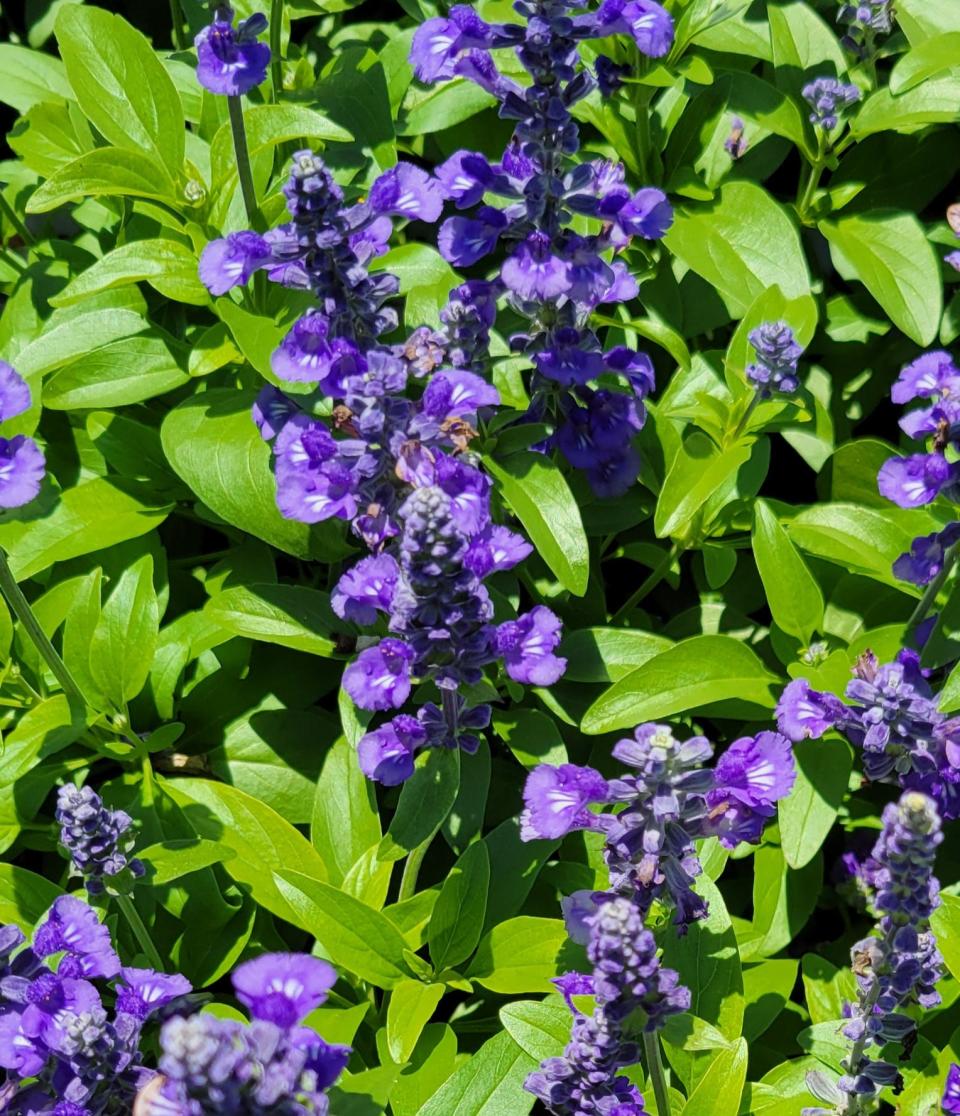You and your garden can survive a steamy Sunshine State summer: Consider these tips
June can be hot and steamy, but there are still plenty of things to do outside. Luckily, the days are longer, too, so remember to get out in the yard early in the morning, work in the shade through the day, or wait until the evening hours to get things done in the yard.
* Calling everyone who likes to eat! Everyone can grow their own food, even if they don’t have a yard — spouts in the kitchen, hydroponic lettuce on the balcony, and a fruit tree in a container. The four-week "Be Healthy: Grow Your Own Food" class series will begin on Monday, June 19, and end on July 10. Two classes are offered each Monday, a morning class from 10 a.m. to noon and another from 6 to 8 p.m. Learn how to grow vegetables, herbs, and fruit crops in containers or the ground. Each ticket costs $70 and includes a notebook with copies of all PowerPoint presentations, additional handouts, and seeds of some heirloom vegetables, culinary herbs, and flowers. Couples, friends, and families can learn together and share the notebook and seeds. For more information on what is covered in the class, go to BHGYOFMorningSeries.eventbrite.com and BHGYOFEveningSeries.eventbrite.com or call Halley at 321-633-1702 and press 0 for help.
* The local fertilizer ban went into effect June 1, for the entire county, including all municipalities. The ordinance bans the application of nitrogen and phosphorus to landscapes, fruit trees, and vegetable gardens. The ban is in effect through Sept. 30.

* As I drive around the county, I have noticed that all the St. Augustine lawns I have seen are being mowed too short! We are currently in a drought, so mowing less than 3 inches (and 4 inches is the best for the lawn) increases the stress on the turf. Mowing the grass to a height of 4 inches will allow the turf to photosynthesize more food and be healthier.
* This is the last month to forgo the pruning of palms and trees (if possible) because baby wildlife may still be present.
* Now that the hot temperatures are here, the shade feels wonderful. Colorful plants that grow well in shady locations include coleus, impatiens, wax begonias, caladium, angelwing begonias, dusty miller, and crossandra.
More: Want pumpkins in time for Halloween (and pie)? Start prepping plans now | Sally Scalera
* If you are interested in adding flowers to your landscape, plants that can handle full sun through the summer are floss flower (Ageratum), amaranth, asters, vinca (or periwinkle), celosia, coleus, coreopsis, cosmos, Dahlberg daisy, lisianthus, gaillardia, gazania, Gerbera daisy, kalanchoe, sunflowers, gomphrena, Melampodium, lobelia, portulaca, blue salvia, red salvia, marigolds, and zinnias.
* For some of the annual flowers, like red salvia (not our native species), marigolds, and zinnias, the blooming period can be prolonged by deadheading the faded flowers. After annual plants flower, they will then produce seeds and eventually die. Removing the faded flowers will keep the plants blooming, looking better, and living longer! Marigolds are easy to deadhead as the faded flowers pop right off when pulled.
* Some herbs that can be planted now include basil, chives, dill, lemon balm, marjoram, Mexican tarragon, mint, oregano, parsley, rosemary, sage, and thyme.
* Vegetables that can be planted now to grow (and some can also be harvested) through the hot summer include calabaza, cassava, chayote, Jerusalem artichoke, jicama, Malabar spinach, New Zealand spinach, okra, Seminole pumpkin, Southern peas, sweet potato, and winged beans.
* After planting a new plant, be sure to do the following two things. First, re-mineralize the soil by applying a rock or volcanic powder (i.e., Azomite) around the plants. This will provide important trace elements that will increase the nutrition of food crops and improve plant health. The last thing to do is establish the beneficial soil microbes throughout your lawn and landscape. The microorganisms will help your plants grow! For more information on this topic, contact the UF/IFAS Extension Brevard County Master Gardeners at Brevard-1mg@ifas.ufl.edu.
* If you are growing bananas, cut the stalk of bananas off when the first hand (row of bananas) begins to turn yellow and hang it in a shady spot to ripen. You can then chop off the top of the stalk, just below the leaves, and cut the leaves and trunk into pieces, scattering them around the base of the plant to add more organic matter to the soil. The trunk can be chopped up and dropped around the base of the plants a few months later to add additional organic matter to the soil!
* The Brevard County Farmers Market is held at the Wickham Park Pavilion every Thursday from 3 to 6 p.m. Check out the Facebook page at https://www.facebook.com/brevardcountyfarmersmarket/ to keep current on the vendors that will be there every Thursday.
Sally Scalera is an urban horticulture agent and master gardener coordinator for the University of Florida’s Institute of Food and Agriculture Science.
This article originally appeared on Florida Today: Those gardening chores: Here's how and when to do them come summer

